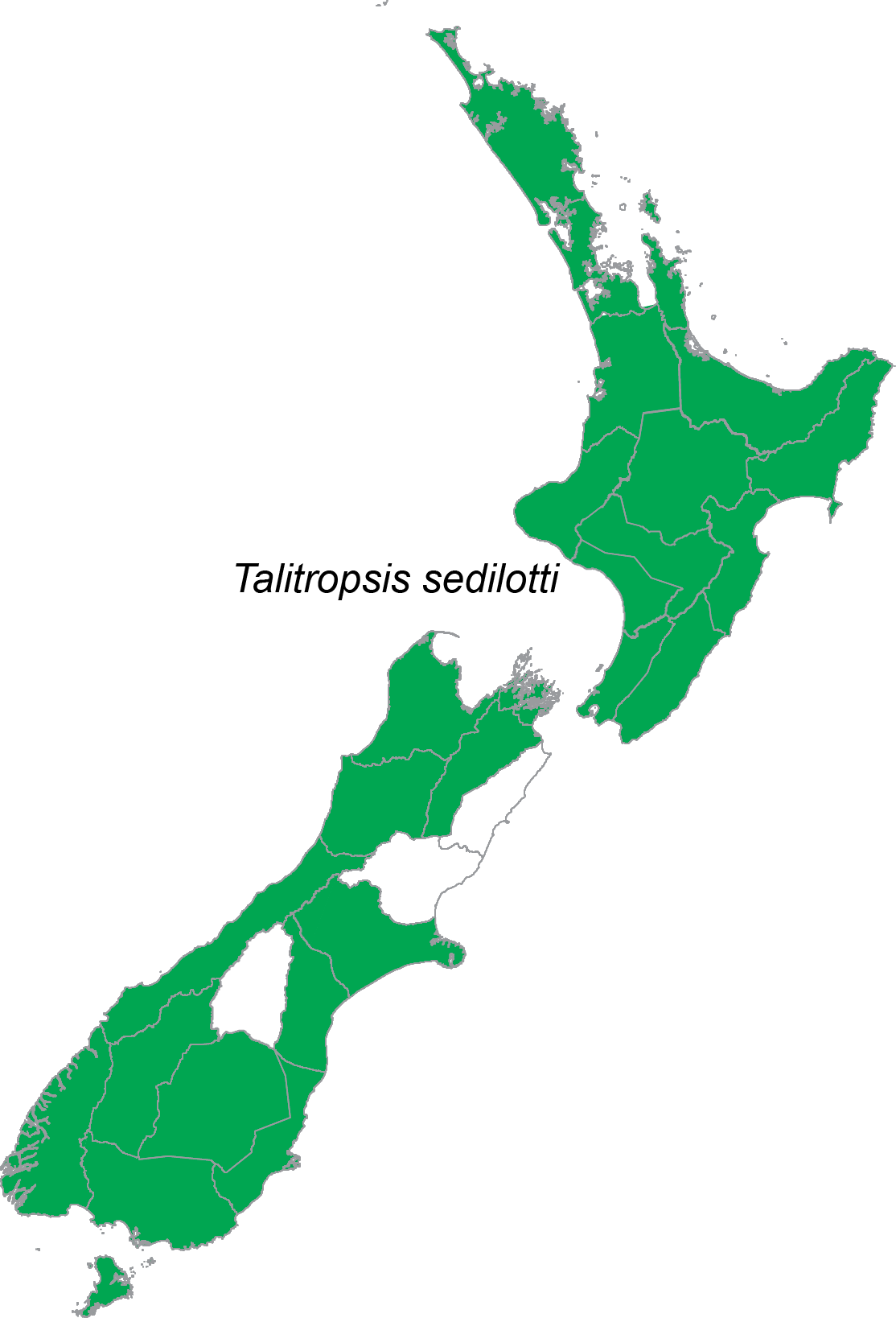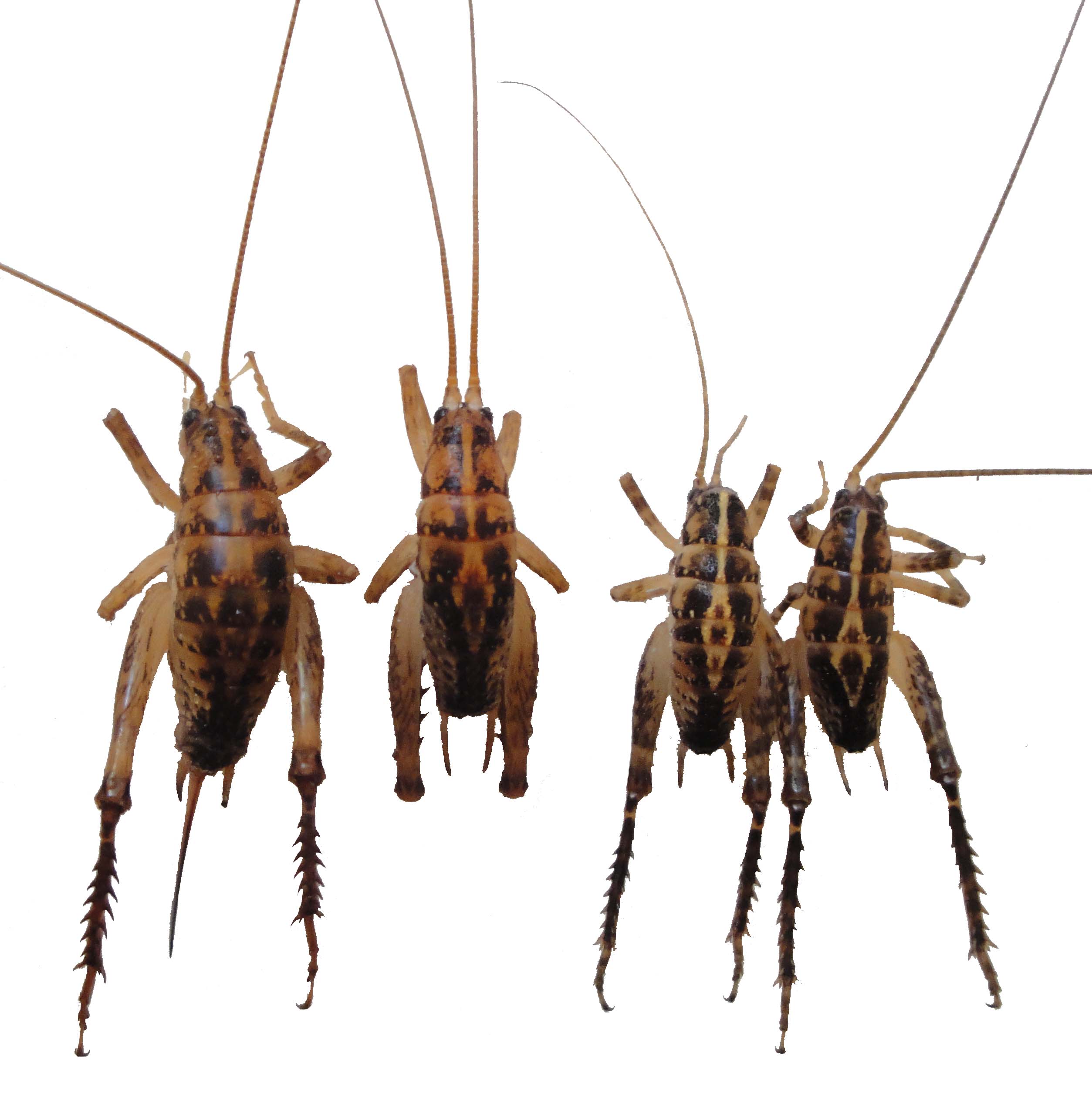Talitropsis sedilloti Bolivar, 1882
Body length of adults about 18mm, female with sabre-like ovipositor of about 14mm. Adults are pale almost orange brown and glossy. The hind tibiae have a rows of prominent spines on either side for most of their length. In most other tokoriro these spines are fine or absent. Younger instars are darker, sometimes almost black with a pronounced pale yellow diamond on the dorsal abdominal surface. Found throughout North Island including nearby islands, plus north and central South Island.
This species is the cave weta most frequently found in tree holes, which together with its glossy appearance makes it readily identified. However, juveniles are not identical to adults; they are darker and have a more prominent diamond outline on their dorsal abdomen.
Talitropsis crassicruris Hutton, 1896
Body length of adults up to 24 mm. Similar to T. sedilotti but slightly larger and with significantly broader hind tibiae. Endemic to the Chatham Island group where it is found on Chatham main island and on The Sisters. It inhabits narrow cavities in living and dead wood.
Talitropsis megatibia Trewick, 1999
Similar in most respects to T. crassicruris but easily distinguished by the extremely stout hind tibiae bearing stout, slightly backward pointing spines on the retrolateral and prolateral margins, but these are often absent from the proximal half of the prolateral margin. Hind tibiae slightly laterally convex above, upper surface strongly longitudinally convex or bulging. Expanded high tibiae may be an adaption to defending roost hole. Endemic to Chatham Islands group but allopatric to T. crassicruris on Rangitira Is., Mangere Is., Little Mangere Is., Pitt Is, The Pyramid, Forty-Fours. Collected on trees and shrubs (eg. Olearia, Hebe) at night and extracted from within dry wood, rotten logs, and petrel burrows. |
 
T. sedilloti juveniles and subadults ©Steve Trewick |

